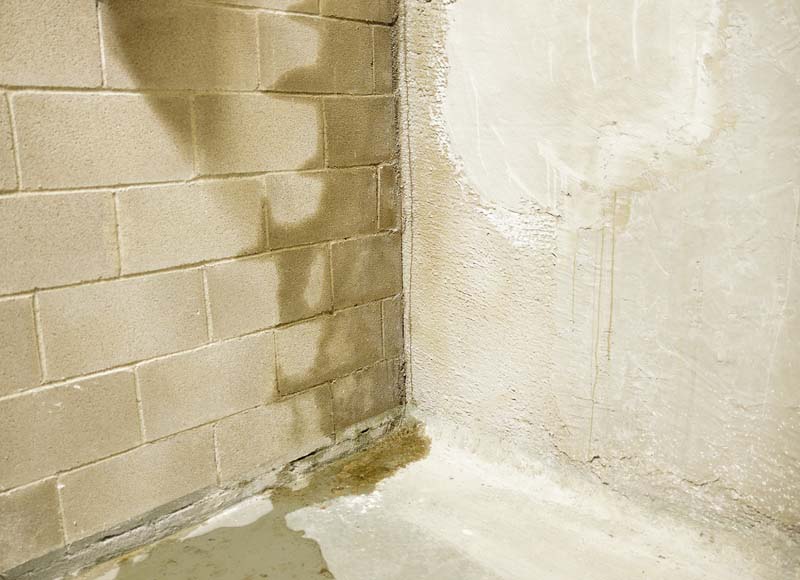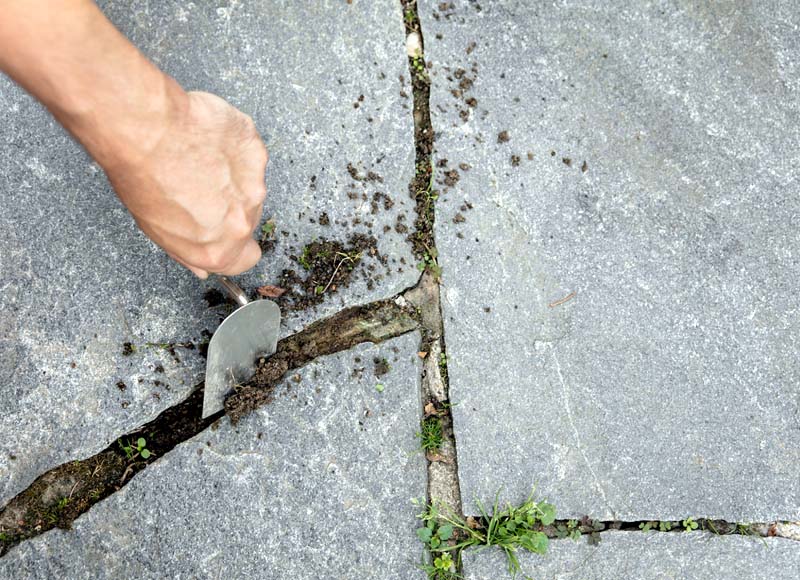![[feature] 7 Repairs to Make Before the First Freeze](https://blogger.googleusercontent.com/img/b/R29vZ2xl/AVvXsEjfk2RYA3aRPKwcou_L55v7V-sZiJFOvIMcschg7IpmE4yCeXO5IfmNJtwTHmEGf2_Sn70JrbGbKOg4b7hV8qFkQ1Q9FrFXaB7Oac_jFtmzUyRNhvsEdf7WdnQ2sgpVO3tHCLc-SvKTrt7S/s16000/autos.dearjulius.com.jpg) |
| © Jacques Bopp / Unsplash |
From Bob Vila
As the days grow shorter and the leaves fall from the trees, it’s time to make a thorough check of the different areas of your house and property to make sure they’re in good condition before Old Man Winter arrives. While concrete is one of the most durable construction materials, it can still be negatively impacted by winter’s freeze/thaw cycles when the water from rain, ice, and snow can seep into cracks in concrete and then refreeze, expanding and resulting in larger cracks or spalling.
Homeowners may take the time to replace weather-stripping on exterior doors and seal gaps around drafty windows when getting their homes ready for winter, but they don’t always know what steps to take to keep their concrete in good shape. See the seven concrete repairs you need to make now, and learn about the products you can use to protect your concrete during the coming cold season.
Control joints control the placement of cracks in concrete slabs. They should be sealed before winter arrives to keep rain and melted snow and ice from running into the cracks, which could freeze and push the cracks farther apart. Even worse, if the soil beneath the slab is clay-based, it will swell when it's saturated, which could cause the concrete slab to move. Sealing the control joints won’t keep them from doing their job—if the slab starts to crack, it will still crack in the pre-cut joints where it’s often not noticeable. By filling the cracks in during the fall, you can prevent water from saturating the substrate. This flexible self-leveling sealant is easily applied with a standard caulk gun and it quickly fills the joint, creating a smooth, level surface.
The weakest part of an exterior brick wall lies in its mortar joints, and when a home’s foundation settles, mortar joints are among the first things to develop cracks. Repairing even small cracks before freezing temps arrive is vital because water from thawed snow and ice can enter the cracks and then refreeze, creating larger cracks and increasing the risk of the mortar crumbling away. To prevent further damage to brick walls, seal the cracks with a good mortar sealant, that bonds tightly to the sides of the crack, seals out moisture.
Stucco is a very popular siding in many parts of the country, but because it is rigid, even slight house movement can lead to cracks. It’s imperative to repair cracks in stucco as soon as possible to prevent further damage from the coming freeze/thaw cycles that can potentially lead to chunks of stucco siding falling from the wall, as well as seal out moisture to prevent mold. Small cracks (less than 1/2-inch wide) can be filled with Stucco Repair, a sanded acrylic caulk that’s designed to match the surrounding stucco.
Small leaks in a basement wall can quickly become big problems, leading to water in the basement, damaged furnishings, and high humidity, which increases the risk of mold growth. Fortunately, repairing a basement leak before they become expensive issue doesn’t require calling a foundation contractor. Leaks from cracks that are less than 1/2-inch in diameter can be quickly and permanently sealed by filling them with water-stop cement, a fast-setting cement product that expands as it sets, forming a watertight bond with the existing masonry. The hydraulic cement comes as a dry powder and needs to be mixed with water until it reaches a putty consistency before kneading it by hand and then pressing into a crack or a hole in the wall. It usually sets in about 3 minutes.
Ice-melting chemicals and frequent freeze/thaw cycles can damage porous concrete driveways and patios, so applying a layer of sealant before it freezes is kind of like adding a coat of armor to the concrete. Before applying a quality sealer to a driveway or other concrete slab, the concrete must first be cleaned with a pressure washer to remove all stains, dirt, grease, or oil. Cure & Seal can then be evenly distributed across the surface using a garden sprayer or roller.
An unsteady, leaning mailbox detracts from your home’s curb appeal, and it is a nuisance to your postal worker. When a post—whether it’s attached to a mailbox or a fence—wobbles, it’s because the post is not adequately secured in the ground. Fall is a great time to replace a wobbly mailbox and then plant a few tulip bulbs around its base for a pretty show of color next spring. If you’re not thrilled about mixing a bag of concrete in the wheelbarrow—no worries—you don’t have to.
Very few things are as aesthetically pleasing as natural flagstone walkways and patios, but just one or two loose stones can make the whole thing look shoddy, not to mention that loose flagstones are a tripping hazard. Calling out a professional mason will cost a pretty penny but if the damage isn’t extensive, there’s a good chance you can reset the stone(s) yourself.
See more at Bob Vila
As the days grow shorter and the leaves fall from the trees, it’s time to make a thorough check of the different areas of your house and property to make sure they’re in good condition before Old Man Winter arrives. While concrete is one of the most durable construction materials, it can still be negatively impacted by winter’s freeze/thaw cycles when the water from rain, ice, and snow can seep into cracks in concrete and then refreeze, expanding and resulting in larger cracks or spalling.
Homeowners may take the time to replace weather-stripping on exterior doors and seal gaps around drafty windows when getting their homes ready for winter, but they don’t always know what steps to take to keep their concrete in good shape. See the seven concrete repairs you need to make now, and learn about the products you can use to protect your concrete during the coming cold season.
Seal Control Joints
 |
| © iStock |
Control joints control the placement of cracks in concrete slabs. They should be sealed before winter arrives to keep rain and melted snow and ice from running into the cracks, which could freeze and push the cracks farther apart. Even worse, if the soil beneath the slab is clay-based, it will swell when it's saturated, which could cause the concrete slab to move. Sealing the control joints won’t keep them from doing their job—if the slab starts to crack, it will still crack in the pre-cut joints where it’s often not noticeable. By filling the cracks in during the fall, you can prevent water from saturating the substrate. This flexible self-leveling sealant is easily applied with a standard caulk gun and it quickly fills the joint, creating a smooth, level surface.
Repair Mortar Joints Between Bricks
 |
| © iStock |
The weakest part of an exterior brick wall lies in its mortar joints, and when a home’s foundation settles, mortar joints are among the first things to develop cracks. Repairing even small cracks before freezing temps arrive is vital because water from thawed snow and ice can enter the cracks and then refreeze, creating larger cracks and increasing the risk of the mortar crumbling away. To prevent further damage to brick walls, seal the cracks with a good mortar sealant, that bonds tightly to the sides of the crack, seals out moisture.
Repair Cracks and Holes in Stucco
 |
| © iStock |
Stucco is a very popular siding in many parts of the country, but because it is rigid, even slight house movement can lead to cracks. It’s imperative to repair cracks in stucco as soon as possible to prevent further damage from the coming freeze/thaw cycles that can potentially lead to chunks of stucco siding falling from the wall, as well as seal out moisture to prevent mold. Small cracks (less than 1/2-inch wide) can be filled with Stucco Repair, a sanded acrylic caulk that’s designed to match the surrounding stucco.
Fill Leaks in Basement Wall
 |
| © iStock |
Small leaks in a basement wall can quickly become big problems, leading to water in the basement, damaged furnishings, and high humidity, which increases the risk of mold growth. Fortunately, repairing a basement leak before they become expensive issue doesn’t require calling a foundation contractor. Leaks from cracks that are less than 1/2-inch in diameter can be quickly and permanently sealed by filling them with water-stop cement, a fast-setting cement product that expands as it sets, forming a watertight bond with the existing masonry. The hydraulic cement comes as a dry powder and needs to be mixed with water until it reaches a putty consistency before kneading it by hand and then pressing into a crack or a hole in the wall. It usually sets in about 3 minutes.
Seal Driveway
 |
| © iStock |
Ice-melting chemicals and frequent freeze/thaw cycles can damage porous concrete driveways and patios, so applying a layer of sealant before it freezes is kind of like adding a coat of armor to the concrete. Before applying a quality sealer to a driveway or other concrete slab, the concrete must first be cleaned with a pressure washer to remove all stains, dirt, grease, or oil. Cure & Seal can then be evenly distributed across the surface using a garden sprayer or roller.
Replace Wobbly Mailbox
 |
| © iStock |
An unsteady, leaning mailbox detracts from your home’s curb appeal, and it is a nuisance to your postal worker. When a post—whether it’s attached to a mailbox or a fence—wobbles, it’s because the post is not adequately secured in the ground. Fall is a great time to replace a wobbly mailbox and then plant a few tulip bulbs around its base for a pretty show of color next spring. If you’re not thrilled about mixing a bag of concrete in the wheelbarrow—no worries—you don’t have to.
Repair Flagstone Walkway
 |
| © iStock |
Very few things are as aesthetically pleasing as natural flagstone walkways and patios, but just one or two loose stones can make the whole thing look shoddy, not to mention that loose flagstones are a tripping hazard. Calling out a professional mason will cost a pretty penny but if the damage isn’t extensive, there’s a good chance you can reset the stone(s) yourself.
See more at Bob Vila























